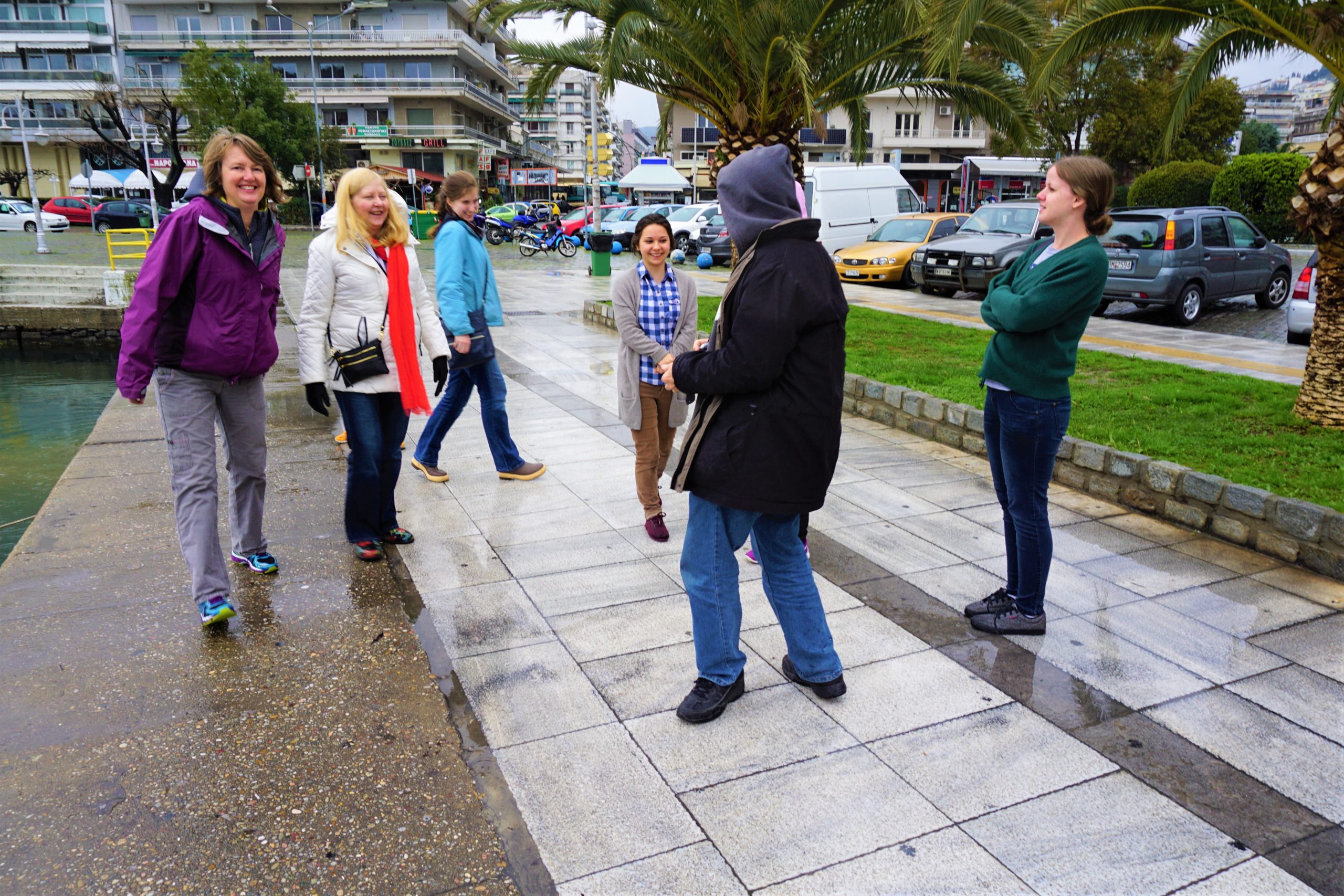From the entrance at the main gate, the Gate of Neopolis, Via Ignatia passed through the village and exited through the Gate of Thrace. The ancient road, Via Ignatia, connected Neopolis and Philippi, Greece.

Via Ignatia traversed right through the middle of the little village of Philippi, dividing it into two parts.
Architects built a ring road that goes around the antiquities and the ruins of Philippi.
The ring road joins Via Ignatia along its way to Drama, Greece.

Ancient Philippi is surrounded by city walls.


We hope someday to see the ancient city gate rebuilt by archaeologists. Archaeologists have excavated part of Via Ignatia at the Old Gate of the ancient village.

The acropolis, a sacred place and not inhabited by citizens was protected by city walls. The city walls go all the way up the hill to where the old acropolis used to be.

Dating back to 4BC, the time of Phillip II, is the foundation of a side little gate. Beside the gate was a tower so that the soldiers could see from above and protect the gate.
The square blocks on the right are the foundation for the protective tower of the gate that was once built here.

Right outside of the city walls is the cemetery, the necropolis, νεκρόπολις, i.e. the city of the death.


We walked, and ran, along the ring road as we approached Philippi.







Philippi was founded in 360 BC by Thasians, remodeled in 356 BC by Philip and renamed Philippi. In 42 BC we have the Battle of Philippi.






At one time there were two towers at the entrance gate of Philippi, Greece, where people could officially enter the city. You could see the right tower, but the left tower was buried under the road. The Apostle Paul, and those from Neopolis entered the Philippi from that gate.

Here are the signs located at the entrance to Philippi.






Since the Neolithic time, Greeks have lived with earthquakes. Philippi, Greece is a highly seismogenic place. The Greeks developed aseismic building methods – still in use today in the countryside. They built stone foundations that were a little bit deeper than normal, affixed a wooden structure and filled it with adobe. Then they plastered the wall. This method provided flexibility to the whole building and absorbed vibrations from an earthquake, making it safe for the people inside.
This aseismic structure was particularly good because it was thermal insulated and very flexible in an earthquake. But it had a disadvantage: it must always be roofed. Without a roof, gradually the rain melts the building down to a layer of clay. A two or three floor building without a roof can be brought down to water level (where we were stepping now.) Then the knowledge of the use of the rooms in the upper floors totally vanished. We cannot reconstruct them, but today, we can gain a lot of information about them, information that fifty or sixty years ago the people could not even imagine.
You cannot take a shovel and start taking off dirt because every layer preserves elements of time, elements of a level. An archaeological dig today is a terribly slow process and extremely expensive.
Massive excavation is considered a crime in archaeology. In some places, like in Israel, the state sometimes decides that entire layers, centuries and centuries of layers, be removed without any study, down to the layer that interests the government. You can see excavations in Jerusalem today with excavators, something that is totally improper in archaeological research because we must see gradual developments, studying the layers, from time to time, from period to period, from year to year and record it.






































